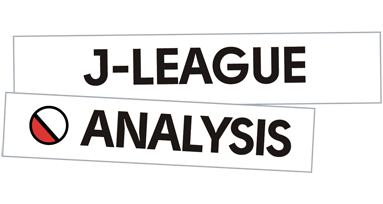In matchday 16 of the J1 League, we saw league leaders, Kawasaki Fontale, come up against an in form Sanfrecce Hiroshima side who overcame Shimizu S-Pulse during the week to secure back-to-back wins.
This fixture was important for both teams as coming away with three points would see Kawasaki hold an eight-point gap between them and second placers, Cerezo Osaka, and secure a fourth straight win. Conversely, a win for Hiroshi Jofuku’s side would see them close in on the top eight sides of the table and prevent them from slipping outside the top ten.
This tactical analysis will highlight the key tactics used by both teams and analyse how Toru Oniki’s Frontale took advantage of Sanfrecce’s defensive errors to secure a deserved win.
Line-up
Oniki deployed his familiar 4-3-3 formation with five changes made from the side that lined up against Vissel Kobe earlier in the week. Jung Sung-Ryong started in goal with Miki Yamane, Jesiel, Kazuya Yamamura, and Shintaro Kurumaya making up the back four. Hidemasa Morita, Yasuto Wakizaka, and Ao Tanaka formed the midfield three whilst Reo Hatate, Leandro Damião, and Manabu Saitō (who was linked with Bundesliga side Wolfsburg a few years ago) lined up as the front three. Damião is already 31 years old, but was back then during the early stages of his career a huge talent and linked with European sides like Liverpool, Arsenal or Napoli.
Hiroshima kept their 3-4-2-1 formation making six changes to the side that played earlier in the week. Keisuke Osako started in between the sticks with Yuki Nogami, Hayato Araki, and Sho Sasaki making up the back three. Rhayner and Yoshifumi Kashiwa provided the width whilst Toshihiro Aoyama and Hayao Kawabe were positioned centrally. Finally, the dynamic pair of Tsukasa Morishima and Douglas Vieira sat in behind the big Brazilian striker, Leandro Pereira.
Hiroshima’s defensive block
Because Kawasaki were creating opportunities early on from getting Saitō in behind their defensive line through the use of combination in wide areas and direct play over the top, Hiroshima looked to sit in a low block and protect the space in behind. From there they could spring a counter-attack by finding Pereira or Vieira quickly, up front, once they won the ball. We will look at this later in this tactical analysis.

As seen above, Kawasaki are comfortable in possession as Hiroshima sit in their defensive block. In this situation, the role of the lone Brazilian striker is to place pressure on his fellow countryman, Jesiel, and prevent him from switching play. On the travel of the pass to their full-back, Yamane, Morishima would slide across to engage. Vieira would replicate this movement on the opposite side if Kawasaki’s left-back was to receive the ball. This left Sanfrecce’s wing-backs to connect and slide with their back three, whilst marking Frontale’s wingers. At times when Kawasaki looked to shift the ball across from wide areas, this would be a trigger for Vieira to step out of the midfield line and press the ball-side centre-back with Pereira marking the holding midfielder or opposite centre-back. As a result, we would see a shift to a 4-4-2 formation.
One of the defensive errors that came from Sanfrecce was the timing of their press and this error consequently lead to Kawasaki’s first goal. As seen below, on the travel of the pass to Jesiel, Morishima decides to step out and press. However, due to the large distance he had to cover to put pressure on the Brazilian centre-back, he gets caught out of position and opens the passing lane to Hatate who is angling his run towards the sideline.

In this phase, Hiroshima are man-oriented with their pressing, so Kashiwa is picking up Yamane, Sasaki is marking the inverted winger, Hatate and Kawabi are running back from midfield and sticking tight to Tanaka.
An interesting observation was the speed in which Sanfrecce’s Central defender, Araki, shifts across when Tanaka is making that threatening run towards the back-line. Usually, when a midfielder is making a darting run the defender naturally shifts across quickly to cover the run. However, at this moment, Araki is still at a jog and holds his position. This was because he was tasked with keeping an eye on Damião who was also shifting across on Araki’s blind-side. As a result, the distances between each member of the back-line are varied and present opportunities for runners to exploit space in behind.
In the image seen below, the left edge of Hiroshima’s back-line has been drawn out of position. Although there is numerical equality with a 3v3, the men in blue have positional superiority, separated from their markers and in a position to win the space in behind the left centre-back, Sasaki.
Through a phase of quick bounce passing with the fleet-footed right back, Tanaka converts his shot on goal and beats Osako at the near post. If Morishima stays and holds his position as Jesiel receives the ball, then the pass to Hatate would be blocked and the more likely passing option would have been a pass to Yamane which would be dealt with by Kashiwa.
Kawasaki’s attacking organisation
On paper, Oniki set his team up in a standard 4-3-3 with both wingers tucked inside and the fullbacks providing the width. However, as seen from the average positioning model below, Kawasaki played with lopsided wingers. On the right-hand side, Hatate (#30) started out wide looking to drag his marker out of the back-line. On the opposite side, it was (#7) Kurumaya who provided the width whilst Saitō (#19) would take up his position centrally and more connected to his midfielders. This was not always the case, however, as Hatate would drift inside and Yamane (#13) would be the widest player on the right side. This movement was demonstrated in the lead up to their first goal. Similar to the other side when Saitō would drift out to provide the supporting option for Kurumaya.

Because of the shorter distances between the midfielders in central areas, it became easier to fix opponents and create space for themselves or other teammates. This is supported by the data which showed that 65% of Kawasaki’s attacking phases came through the middle of the pitch. Not being set in a fixed position, the Frontale midfield would look to get unmarked by floating around in midfield during phases of comfortable possession, or when they were in the immediate phases of play as a potential receiver, rotations would be incorporated.

As seen above Yamane has comfortable possession as he is not being pressed with urgency. Being the highest player Tanaka looks to get on the ball by dropping into space below. As he makes the movement to drop, Wakizaka sprints into the space vacated by Tanaka’s marker. This picture is another example of how narrow Saitō would become to attack the back post if a cross was to come from the right-hand side. The variation to this movement would be when the cross is coming in, he would drop under Damião to compete for the second ball.
What made the J1 League leaders dangerous was their consistent movements off the ball to destabilise Hiroshima’s back-line, especially if the ball was in wider areas. What we would see is that a wide player in possession identified space inside, he would make that run and attack the space. As this happened, teammates would start making opposing runs to signal a through ball. If their immediate marker followed the runner then it would open up space in front of the Hiroshima’s back-line. If they didn’t follow the runner than he would have the opportunity to receive and shoot on goal. This scenario can be seen below.

Here Saitō receives the ball on the left flank and turns to make his run inside. As this happens his teammates make darting forward runs to break the Hiroshima defensive line. After Saitō plays the Brazilian forward, he doesn’t stop his run and instead continues his run behind to receive the bounce pass from Damião in a movement that was similar to what lead to Kawasaki’s first goal. These opposing movement made it difficult for Sanfrecce to maintain their defensive organisation and prevent goal-scoring opportunities.
Sanfrecce counter-attacking from their low block
Once Sanfrecce were able to win the ball back from their low block, they would usually have two outlets. If Kawasaki were organised in their balance to win the ball back, Hiroshima would play the ball back to their goalkeeper. If, however, they were able to play forward, it would usually be the Brazilian strike pair that would look to receive the pass. If they were able to receive the ball facing forward, they would drive and attack the exposed centre-backs. If Kawasaki maintained their defensive reorganisation and prevented Vieira and Pereira from facing forward, then the pair would combine with their midfielders looking to make forward runs.
Here Sasaki wins the ball back and is able to drive forward. Once Yamane engages, the dynamic left centre-back plays the ball across to Vieira who then has the space to drive forward with Pereira supporting.
Below is a similar situation where after winning the ball, Hiroshima looks to find their strikers early. Recognising the scenario, Pereira looks to get on the ball by dropping deeper to receive away from his centre-back marker.
Whilst he has the available space to turn and drive forward, Kawasaki already have three men covering. As a result, the Brazilian combines with Morishima who then goes on to attack the space behind Yamane after he goes to engage Pereira. With the speed of Morishima and the size and strength of the Brazilian duo, Hiroshima created a number of opportunities to keep Sung-Ryong on his toes in between the posts.
Conclusion
This tactical analysis showed that the flexibility within Kawasaki’s system, helped them create a number of goal scoring chances through dragging opposition players out of position and exploiting the space left as a result. With three goals in the space of four minutes during the second half, Oniki’s men secured a 5-1 victory and kept their eight-point lead at the top of the J League table.
Whilst the early signs for Frontale are positive, there is still a lot more matches to be played. With Cerezo Osaka (former Machester United striker) in form with five wins on the trot, Kawasaki cannot afford to be complacent. Because of this, squad depth is going to play a huge role in the back half of the season, and we are already seeing early signs of this with weekly changes to their starting line-up.










